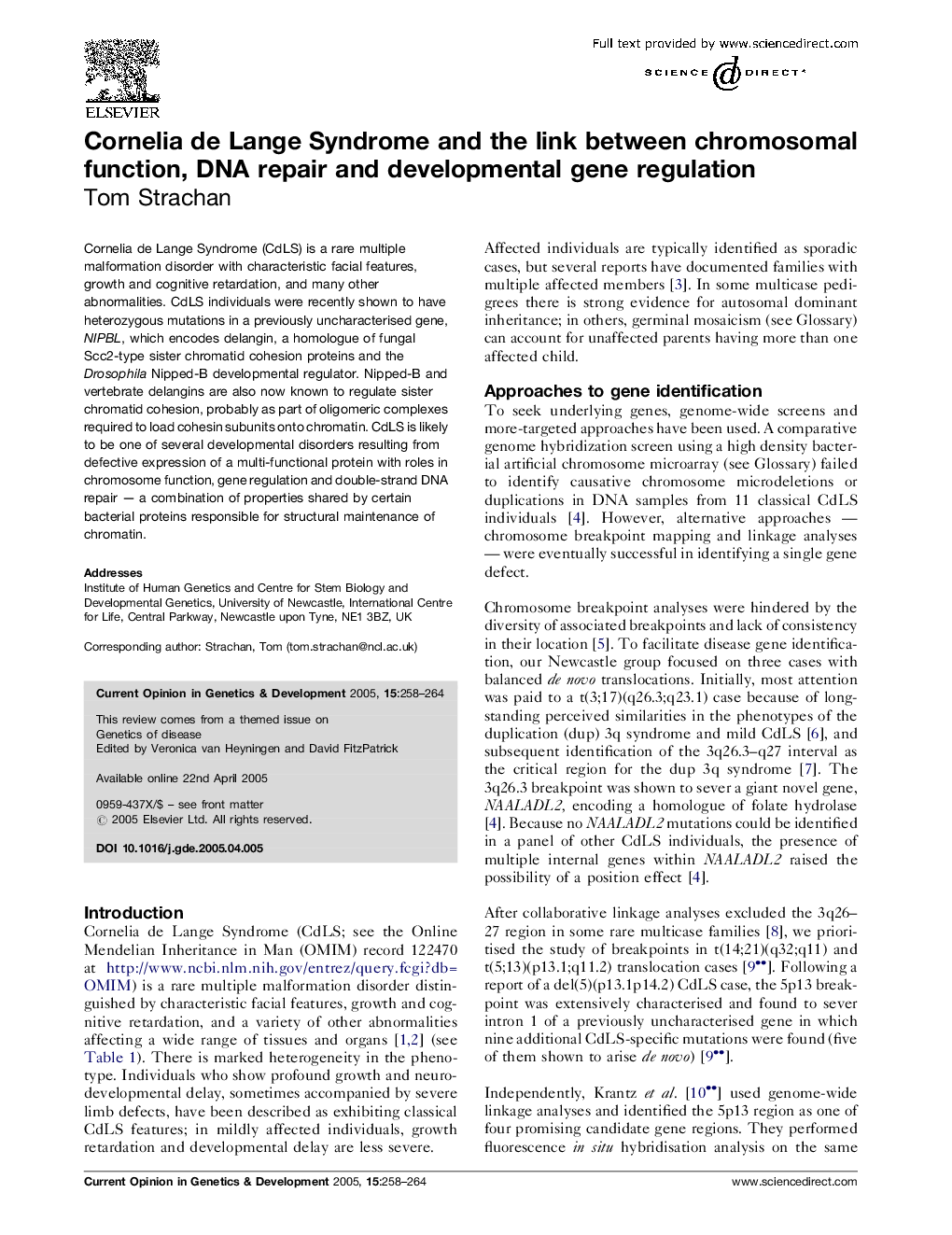| Article ID | Journal | Published Year | Pages | File Type |
|---|---|---|---|---|
| 9107572 | Current Opinion in Genetics & Development | 2005 | 7 Pages |
Abstract
Cornelia de Lange Syndrome (CdLS) is a rare multiple malformation disorder with characteristic facial features, growth and cognitive retardation, and many other abnormalities. CdLS individuals were recently shown to have heterozygous mutations in a previously uncharacterised gene, NIPBL, which encodes delangin, a homologue of fungal Scc2-type sister chromatid cohesion proteins and the Drosophila Nipped-B developmental regulator. Nipped-B and vertebrate delangins are also now known to regulate sister chromatid cohesion, probably as part of oligomeric complexes required to load cohesin subunits onto chromatin. CdLS is likely to be one of several developmental disorders resulting from defective expression of a multi-functional protein with roles in chromosome function, gene regulation and double-strand DNA repair - a combination of properties shared by certain bacterial proteins responsible for structural maintenance of chromatin.
Related Topics
Life Sciences
Biochemistry, Genetics and Molecular Biology
Developmental Biology
Authors
Tom Strachan,
